
Welcome! You are at the Right Spot with MW to find treasures! Below are some of the best ways on how to get started on the many treasure hunts talked about here and the MW Forum! Join the adventures!
- Learn about Past Armchair Treasure Hunts (See below)
- Join Discussion Forums and Discord
- Ask Questions
- Read About Codes, Ciphers, Puzzles, Riddles, etc. to Spur Ideas
Many searchers did all of these, and have found some awesome treasures. Myself included. But, I remember being lost the first time looking at an armchair treasure hunt, so I understand if that is how you feel. My first hunt was A Treasure’s Trove in 2004. My sister had gotten me this book and told me there were 12 treasure tokens hidden across the states valued at around a million dollars. If you were able to solve the clues inside the book and find the hidden token, you could claim it’s prize. Sounded awesome!
Then I opened the book, and wondered, ‘What the heck am I supposed to do here?’ What exactly are the clues? Sure I saw a lot of strange things, but how were they supposed to work together to lead me to a location of a treasure? I could have tossed the book to the side and said, ‘I’m too confused’. But then I would have missed out on a whole new world of never-ending adventures and found treasures. Plus, I would have missed meeting great people and having lots of fun going places as a family.
(Here are my four kids in 2005 at the Grasshopper Tree for a token in A Treasure’s Trove (we were 2 hours too late- the token was found already, but we had a blast and created memories)
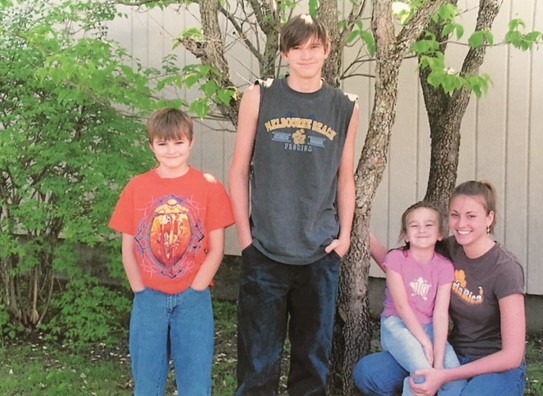
One of things that I found extremely helpful, and discovered to be one of the best ways to get started in Armchair Treasure Hunting, was to look at how Armchair Treasure Hunts in the past had been created and solved.
Although the solutions won’t be the same, they may hold similar elements and methods. They will also get you thinking ‘outside the box’ and demonstrate different ways information can be hidden within images and text. (Below are links to some past hunts, and examples, to get you started)
With this ‘background’, you are then be able to begin trying things to find the solution on the hunt you are working on. And that is important to realize— you research and try things based on the leads, possibilities, and anomalies you notice within the ‘hunt’. Many times it isn’t exactly clear what you need to do, not even for those experienced in armchair treasure hunts. But you just ‘start’ exploring. This exploration is part of the puzzle, and often this is what new people don’t expect and get confused with. It is this searching (sometimes feels like wandering in the dark..lol…and that’s ok), though, that gives the greatest enjoyment and ‘aha moments once something is found!’
Whether new to armchair treasure hunting, or old, always remember, we are all only trying to discover what clues might help us further along, or not, in a hunt. A new person can just as easily discover these as any other person. You never know what the creator of the hunt imagined and placed in the puzzle for you to find. They are all different and NEW to all of us!
Which leads to another great way to get started. Join in on discussions, and ask questions. The MW Forum offers a section to chat on each of the Top Ten Armchair Treasure Hunts currently going on, and lots of others! Here is a place to ask questions, and get to know what others are researching, seeing or trying. Also, you can join MW’s Treasure Hunting Facebook Group, and other Facebook Groups on specific hunts. These provide an array of ideas and discussions.
Even though you don’t always agree on all the ideas presented by others, just seeing the different perspectives spark other lines of thought for yourself to investigate. And as you begin to learn how information or clues can be hidden, you begin understanding, and imagining, lots of ways it can be done! Too many!
But no matter, you begin to enjoy the paths followed during a hunt too! To me this is the best part. Treasures can always be found; not always the ones intended, but others unexpected. The hunts lead us to explore new places, people, and things. They give us that incentive to explore the extraordinary. And it is found.
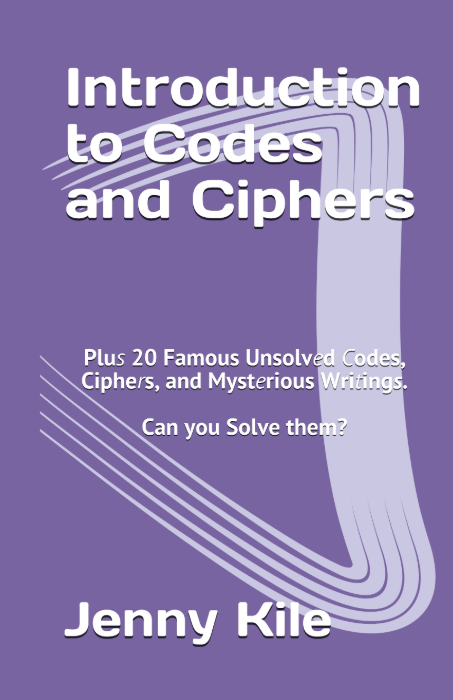
In armchair treasure hunting it is also helpful to become familiar with various codes, ciphers, and other puzzles. For example, if an image has a pig in it, a searcher might want to be on the lookout for the Bacon Cipher. In my book, Introduction to Codes and Ciphers, I go over 20 different methods to encode information, and give practice codes to break. I demonstrate how information could be hidden in a puzzle using the codes.
In many hunts, there are numerous methods used to come together for a solution. Creators like to use the various coding methods to give preliminary, or even, major clues. The overall solution is sometimes a combination of connecting these clues to formulate an answer. Of course, sometimes, it is just the breaking of one of the codes too…lol. They are all different—as they must be, for if they were same, there wouldn’t be any challenge to solve any of them.
Below are some Past Armchair Treasure Hunts you might want to explore. Some were easier to solve, than others. While MW has shared longer summaries on the hunts (and you can follow the links), I offer an example of a puzzle or two found in the hunts below, so you can begin to understand how clues can be hidden in armchair treasure hunts– leading to their treasures!
(Don’t forget to join the fun on the MW Forum and MW Treasure Hunt Group on Facebook) We’d love to have you with us! (And you might also like to get my books on Armchair Treasure Hunts and Introduction to Codes and Ciphers)
1)Masquerade Armchair Treasure Hunt Book and Anagrams
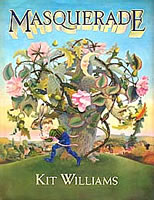
Masquerade was published in 1979 and is considered the first book in the Armchair Treasure Hunt genre. It held clues, both visual and verbal, that once solved, led to a golden hare encrusted in jewels buried in the UK countryside worth thousands of dollars. It was found in 1982.
The solution consisted of drawing lines from inside the illustrations of the book to letters in the outside frame. This provided a Master Riddle to then solve for an exact spot to dig for the buried hare. Clues for such actions were given within the book. You can read more on how this hunt was solved here: 40 Years of Armchair Treasure Hunts and How the First One, Masquerade was Solved
But one of the fun puzzles in the book, not necessarily needed to find the hare, but fun nonetheless, were the barbed and red letters in each of the frames around the images. The letters could be anagrammed to give words. An anagram is a jumbled mix of letters which forms another word or phrase.
For instance, as shown in the image below, the Red Letters, AICAS, anagram to ISAAC and the Barbed Letters, ISR, anagram to SIR.
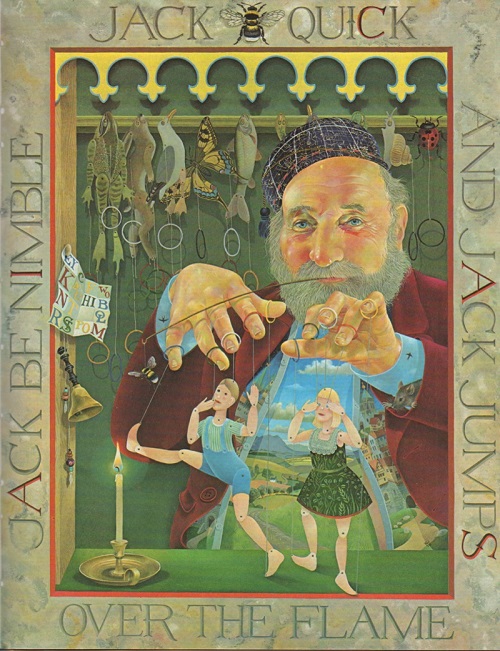
While the anagrams of Masquerade did not hold any major clues for its buried treasure, in other hunts, they might. In one of the MW Treasure Hunts, there was seen: abes fo eter (shown below in #7 MW Treasure Hunts). This anagrammed to BASE OF TREE and was where the treasure was hidden.
.
2)Treasure: In Search of the Golden Horse and The Bacon Cipher
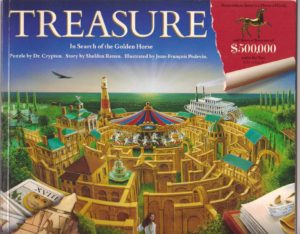
Treasure: In Search of the Golden Horse was released in 1984. The hunt contained clues to the location of a buried sculpted horse of gold. Within the belly of this gold horse was a key to a safe deposit box for a prize of $500,000 cash. Although the puzzle had a deadline, and was not solved in time, here is more on how this hunt could have been solved and it’s treasure claimed by a searcher: Treasure: In Search of the Golden Horse Solution (The treasure was given to charity instead).
One of the supporting puzzles in this hunt included the use of the Bacon Cipher. The Bacon Cipher utilizes two representations for A and B, and a bilateral alphabet key made up of five characters. (Read more on the Bacon Cipher). ‘A and B’ could be anything-
Inside the book, Treasure: In Search of the Golden Horse, was a small image of a ‘Pig’ beside 10 trees of varying heights. A and B were represented by the two different types of trees (Tall and Short) in this hunt. The ‘pig’ hinted to applying the Bacon Cipher. Here is a key for the cipher used:

As you can see, the trees gave TN for Tennessee (In the key- T= BAABA or Tall, short, short, Tall, short, and N=ABBAA or short, tall, tall, short, short). It was a clue towards Tennessee Pass which was important for solving the puzzle.

.
3)The Secret and Hidden Outlines
For over 30 years, The Secret: A Treasure Hunt, has taunted searchers. This book, published in 1982, includes 12 images and 12 verses which need correctly matched together in order to discover the locations of 12 buried ceramic casks. Each cask contains a key to be redeemed for a valuable gemstone.
To date, only two of the twelve casks have been successfully unearthed. The first cask was found by Rob Wrobel in 1984 in Grant Park, Chicago, shortly after the hunt’s release. Not until years later, in 2004, was another discovered by Brian Zinn and Andy Abrams at the Cultural Gardens in Cleveland. Searchers, in both cases, connected an image with a corresponding verse, and followed clues found within both image and verse to the exact spot of burial. (click on links with names above to read their story).
In their stories, and even in the unsolved locations, it is noticed hidden in the images are outlines of states, physical monuments, or other items connecting to the final location. These are clues towards solving the puzzles. For Instance, an outline of the State of Ohio, and then a key city attraction (Cleveland Terminal Tower) can be clearly seen in Image 4 of The Secret (shown with verse below)
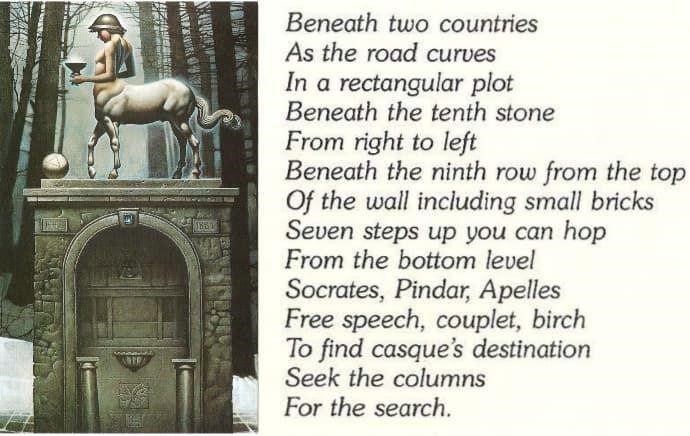
These clues helped lead the searchers to Ohio, and then Cleveland. Other puzzle pieces (of both verse and image) then led to the park in Cleveland, and finally the exact dig spot of the buried treasure. (Ohio Outline is on the left, at the base of the tree, below the tower outline)
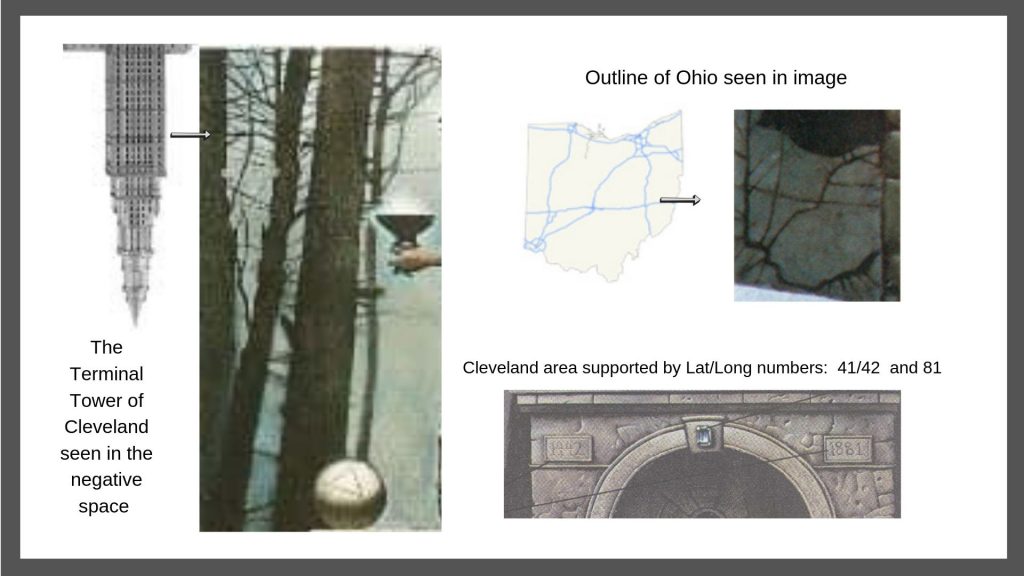
There are still ten casques out there buried to bring to the surface. MW offers a In Search of the Secret Casques Series and takes a look at each of the remaining proposed locations. Reading these, along with the Beginner’s Guide to the Secret, will help any new searcher get involved in The Secret and other armchair treasure hunts.
Additionally, they will also help in finding the solution for a hidden 13th Casque! Tribute: Hunt for the 13th Casque was released in February 2019, and offers a prize of over $2,000 dollars. Since it is a Tribute to The Secret, it was created to hold many of the same known hidden elements as The Secret Treasure Hunt did. (Best of luck)!
.
4)Mysterious Stranger and The Null Cipher
David Blaine, the infamous street magician, illusionist and endurance artist, published a book, Mysterious Stranger, in October 2002. This book was over 200 pages and included an armchair treasure hunt with a prize worth $100,000 dollars. It was solved in March of 2004 and the cash prize awarded.

Mysterious Stranger consisted of twelve sections. Intermingled within these pages were clues to find a solitary stone. This stone would then be used to claim its 100,000 prize. Read more about this hunt’s full solution here: Mysterious Stranger by David Blaine: Armchair Treasure Hunt Solved in 2004.
There was a fun clue found in the book that told searchers they needed to find a stone. It was given by way of a Null Cipher. A Null Cipher is a concealment cipher. It mixes plaintext with ciphertext via a pattern- like take every 10th word or the last letter of each word.
Below is an example of how it was used in Mysterious Stranger. From a unsuspecting caption in the book (shown right and written below), searchers could take the first letters of the words after P.T. Barnum to get: IN A STONE
P.T. Barnum, innovative, nervy, audacious, somewhat typical of New England.”
Blaine later told searchers that inside the hidden stone was a golden orb with his cell number to call and claim the $100,000.
The Null Cipher has also been used to give a clue in The Whistle Pig. The Whistle Pig was published in 2003, and remains unsolved. Read more about that armchair treasure hunt here: Top Ten Facts Known About The Whistle Pig Treasure Hunt
.
5)A Treasure’s Trove and Polybius Square
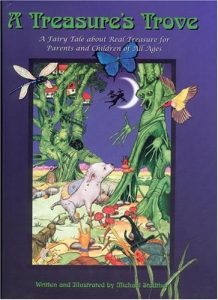
A Treasure’s Trove was published in 2004. It consisted of 12 hidden tokens across the states. Solving the clues in the book led searchers to the locations of these tokens. The key puzzle used in this hunt was the Polybius Square -and it was used very creatively.
I explain more about the full solution for A Treasure’s Trove treasure hunt here: A Treasure’s Trove Armchair Treasure Hunt.
I include the Polybius Square Section of a Codes and Ciphers article below and how it was used in A Treasure’s Trove:
The Polybius Square, in its most commonly used form, is a 5×5 grid filled with the alphabet. The I and J often share a space within the grid. The columns and rows of the grid are numbered 1 thru 5. It looks like the following:

To encode a message (using the square above) a person would use 1-1 for A, since it is in the 1st row and 1st column. The letter H, to give another example, would be 2-3; 2nd row, 3rd column. To decode the hidden word: 44, 42, 15, 11, 43, 45, 42, 15 – a person needs only to look at what letter is in the 4 row and 4 column to get ‘T’; 4 row and 2 column to get ‘R’; and so on. (Can you solve the rest?)

The Polybius Square of encoding is not very secure. However, there are different ways it can be used which make it an useful code and more difficult. One technique which can be hidden in plain sight. For instance, in the hunt A Treasure’s Trove, certain images in the book concealed the pairs of numbers which revealed a message by applying those pair of numbers to the Polybius Square. To decode one of the messages in A Treasure’s Trove, leaf veins were used. On the right is one of them.
The leaf provided the pair of numbers, 3 and 4. 3 veins on one side, 4 on the other. Other leaves of the page provided other pair of numbers to reveal a hidden message once they were applied to the Square. Any illustration which could use something to represent pairs of numbers could be used in this type of code.
.
6)Art of Hidden Messages and the Braille Code
A Famous Grandson, by Art of Hidden Messages, offered a $300 cash prize to the first person who submitted a successful claim for its hunt. Searchers needed to correctly answer two Questions. Clues to find these answers were hidden in a single PDF consisting of a professionally painted watercolor by Beth Hovanec. More on this hunt can be found on the MW Forum.
One method used to cleverly hide the word POEM in the hunt, which was a hint for searchers to discover a Poem connective to the puzzle, and ultimate solve, was a Braille Code. The positioning of yellow flowers, as seen below, were used in its case.
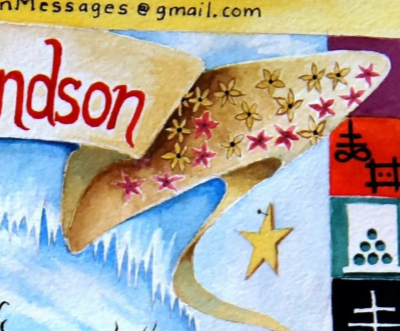
The following is a graph providing the alphabet in Braille:
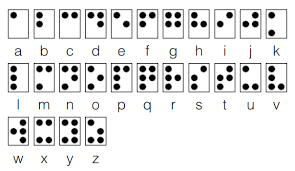
This known system can be used to hide information by disguising Braille Cells as other things, and transmitting secret messages. As can be seen in the above example, the yellow flowers are in position of a P, then O, next E, and finally M. Now do you see the word POEM?
Being aware of different Codes and Ciphers is very helpful. That is why I wrote ‘Introduction to Codes and Ciphers’. As mentioned above it includes over 20 different Codes and Ciphers and offers practice on not only how to solve them, but how they could be appear in a puzzle.
7)Map of the Dead and the Ottendorf Cipher
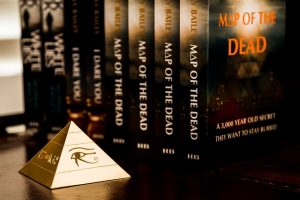
The Map of the Dead Armchair Treasure Hunt was solved in late 2018. It’s prize was a 18k Golden Pyramid. (See Full Details). The clues needed were in the second novel by Murray Bailey. Searchers also had to go to a website and complete 4 stages to successfully claim its prize.
One of the challenges searchers had to solve included the use of the book cipher or Ottendorf Cipher. In the back of the book was found a string of numbers: 23329 11188 315162. These related to page number, line number, and word number. So on page 23, line 32 and word 9 in the book, you were to find the word FIND. Page 111, line 8 and word 8 was the word BURIED. And finally, page 315, line 16 and word number 2, says SARCOPHAGUS.
FIND BURIED SARCOPHAGUS were the clues needed to correctly answer the challenge on the website. Once each challenge was successfully answered, the next challenge would be given.
.
8)MW Treasure Hunts and the Rebus (Picture Play)
One of the first MW Treasure Hunts launched was a search for The Lost Philosopher’s Stones. Over the 2017 Summer Season, each of four coded scrolls, involved in the hunt, revealed clues to the location of a hidden stone. Each stone offered a Cash Prize of $250 to its finder. Solutions for these hunts are given here: MW Treasure Hunt: The Lost Philosopher’s Stones Solution Page.
One of the many methods to give clues in the first hunt was a Rebus. As shown below, there is Rock, then a Line, then an X below the Line. Everyone knows X Marks the Spot, and so the X under Rock simply meant the location of the Coded Stone to claim the prize is UNDER A ROCK.
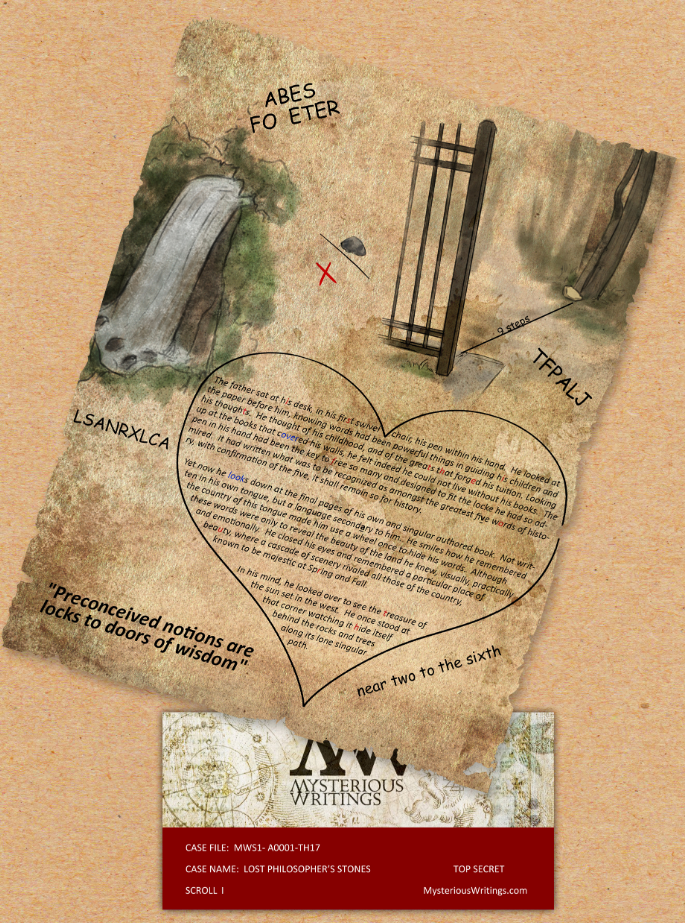
The Rebus, or picture play, can be used many ways to offer clues for a hunt. Look closely at images!
.
9)Forrest Fenn Gold Medallion Hunts and Morse Code

The Forrest Fenn Gold Medallion Treasure Hunts were launched on January 3, 2019. There were ten total in the first series, with more hunts to follow. (Subscribe to the MW Newsletter for Updates) These initial hunts were meant to be solved quickly and so might offer great practice for those getting started. Links to all the releases, and solutions, can be found here: MW FFGM Treasure Hunts.
In FFGM Treasure Hunt #8, Morse Code was given to confirm the state the treasure was hidden in. Morse Code commonly uses a sequence of dots and dashes, with spaces, to provide letters. However, like the Bacon Cipher demonstrated above, any representation for these elements (the dot, dash, and space) can utilize the Morse Code key (shown right).
For example, the long string of numbers seen across the top is Morse Code. 1 was a dot. 2 was a Dash. 3 was a space. They revealed: March Forth into the State. Vermont was admitted to the Union/became a state on March 4, 1791. Just another confirmer for the State/VT. Click for Link to full solution for FFGM #8 and the other FFGM hunts.
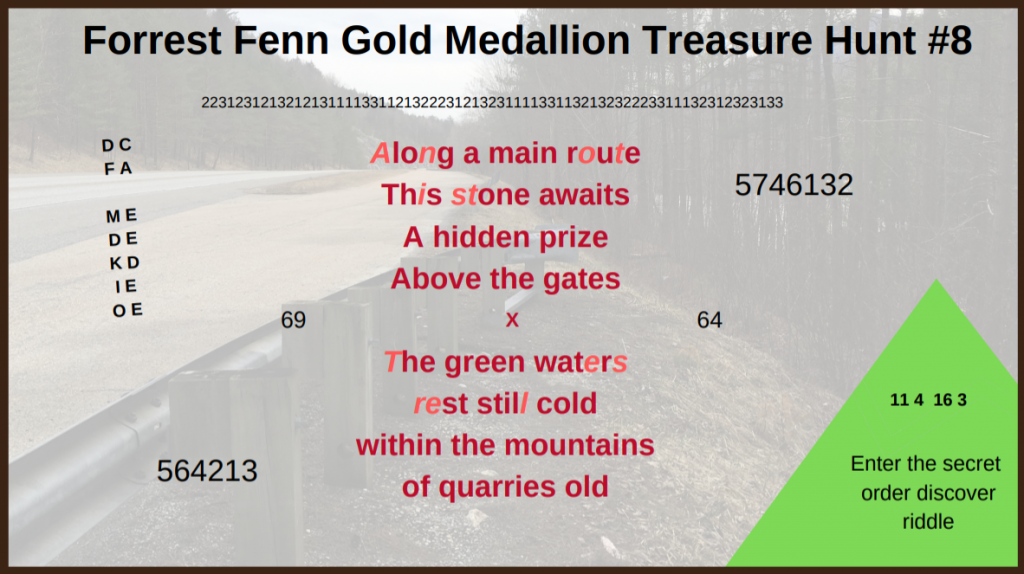
.
10) Tap4Treasure and Internet Scavenger Hunt
T4T Missions are Free To Play. Agents(players) visit T4THQ and receive Dispatches to track down the location of a drop site for a mission in progress to claim a Bounty. It is simple as that!
In Mission #6, for instance, T4T released the following clue:
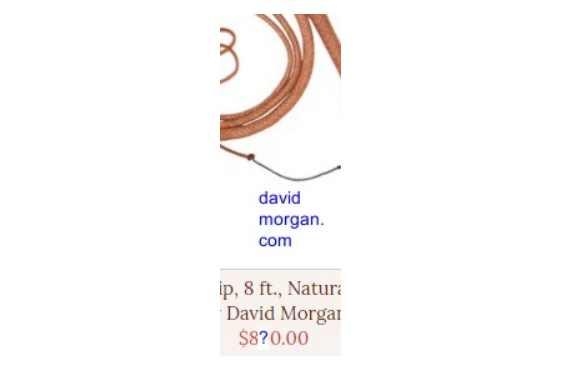
Searchers needed to go to the davidmorgan website and ‘hunt’ for the correct matching item to discover the hidden number. The answer is shown below. To complete the Mission, several ‘numbers’ had to be scouted out and were then used as a Password to claim T4T’s prize of a Silver Coin from El Cazador! Not all treasure hunts are complicated! Some can be just Fun, like a Scavenger Hunt!

.
Just from those few hunts, you can begin to see how clues are hidden. Each Treasure Hunt is different. There are endless ways information for finding a treasure can be placed in a Treasure Hunt!
.
Best of luck with all that you seek! Always Treasure the Adventure!
.
.

